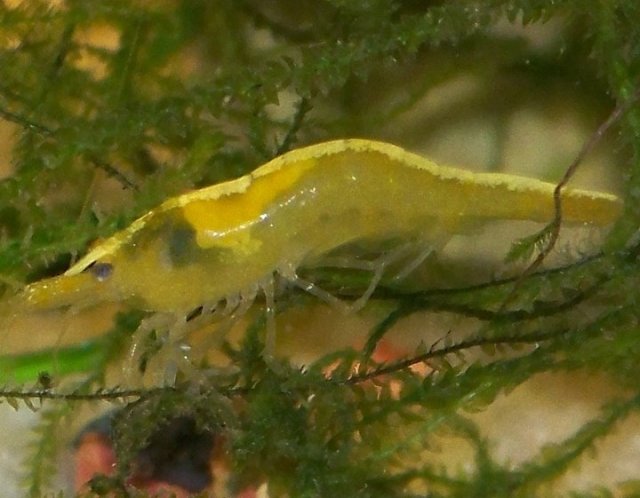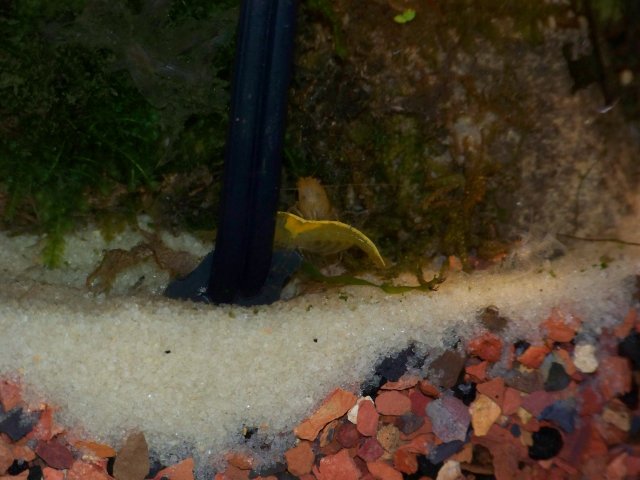Basically the eggs are kept up on the shoulders in the "saddle." As the female gets to the right age/developmental status they start to move down an equivalent of Fallopian tubes to around the middle-lower part of her "chest", in front. The male stops by and delvers a packet (that's the term they use!) of sperm, then pretty much tips his hat and leaves. The eggs pass through the sperm packet, being fertilized on the way, and the female deposits them between the swimmerettes for development.
If for whatever reason the female is ready but there is no old-enough male available she goes throught the same motions but, obviously, without the sperm packet. So the eggs that are deposited just hang there for a few days then start to decay and are dropped. I think my briefly berried cherry went through this recently; she only had about 6-8 eggs in the undercarriage as best I can tell. Observation continues.
They say both parties molt immediately before this action commences. At any rate it matches what you saw. Very cool observation and you are very alert to have caught it.








